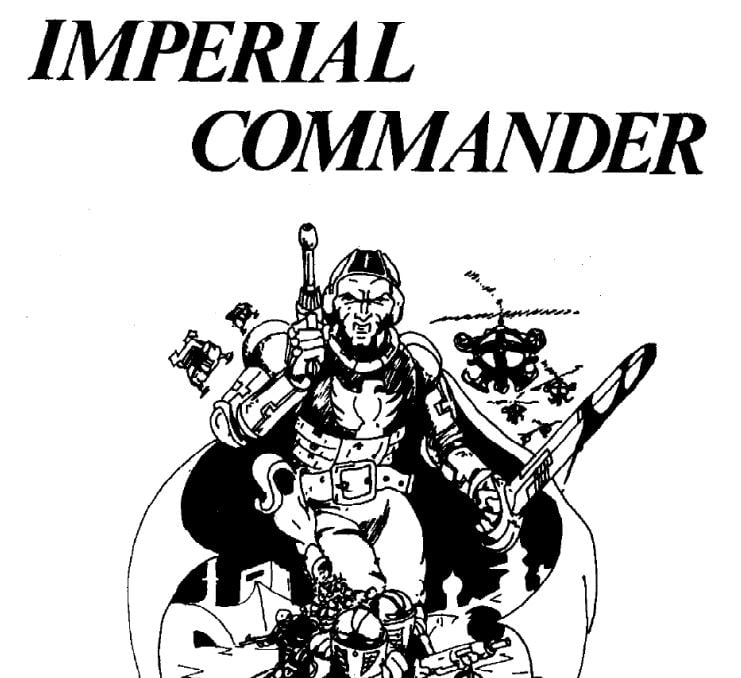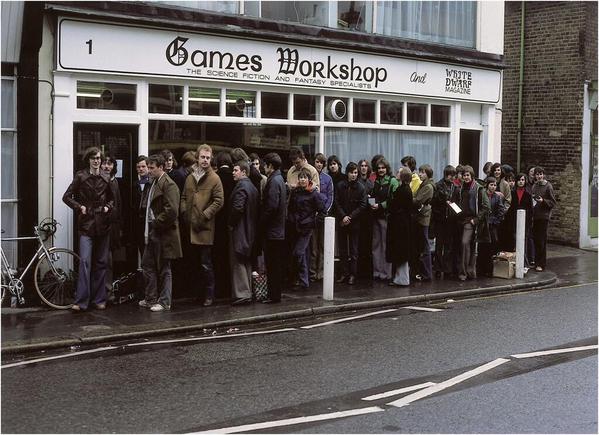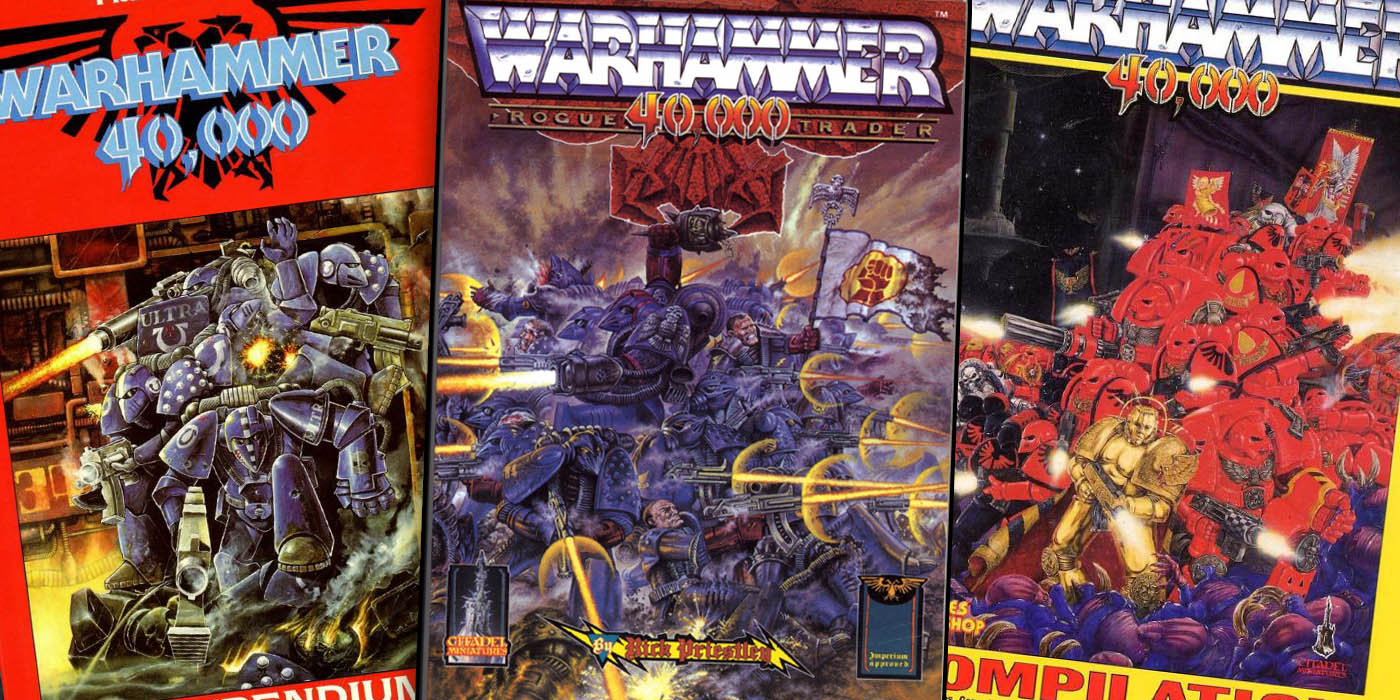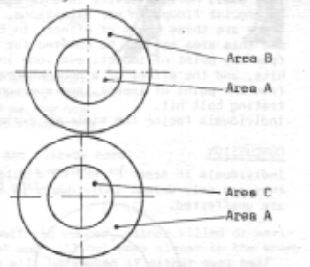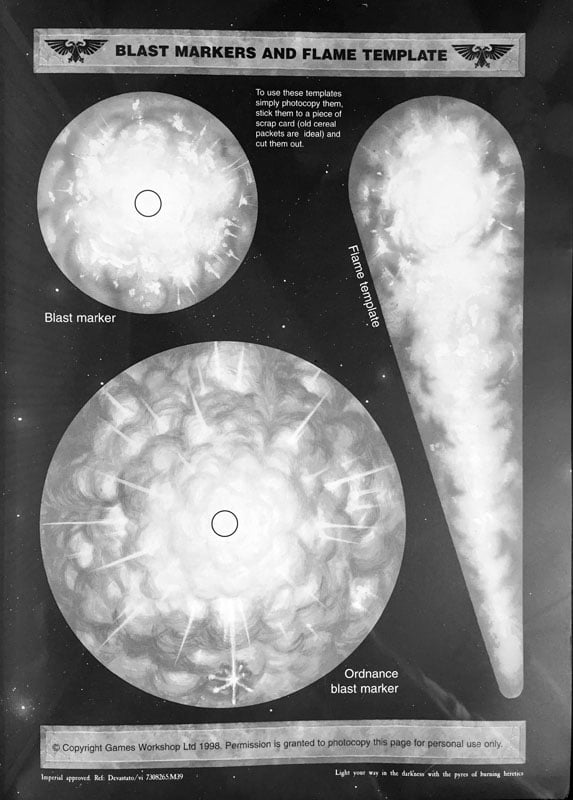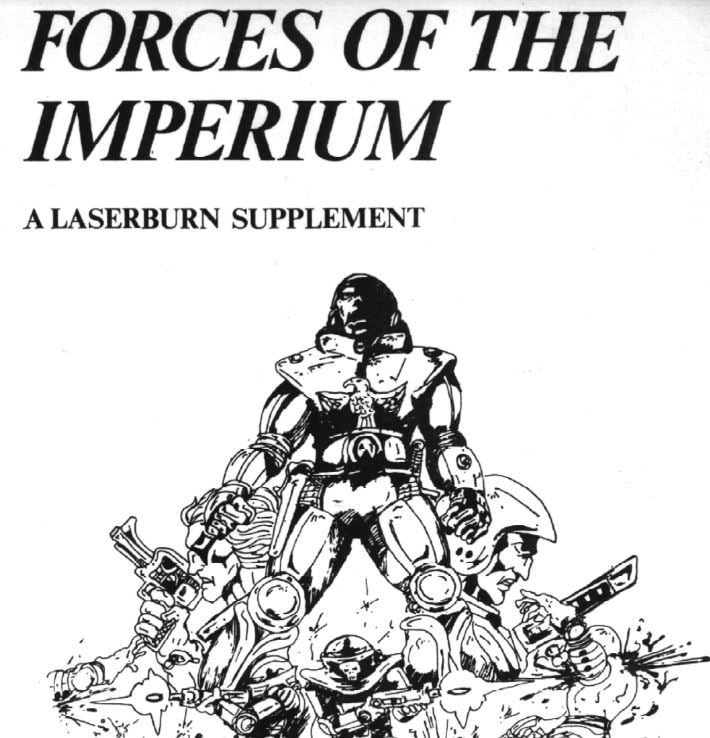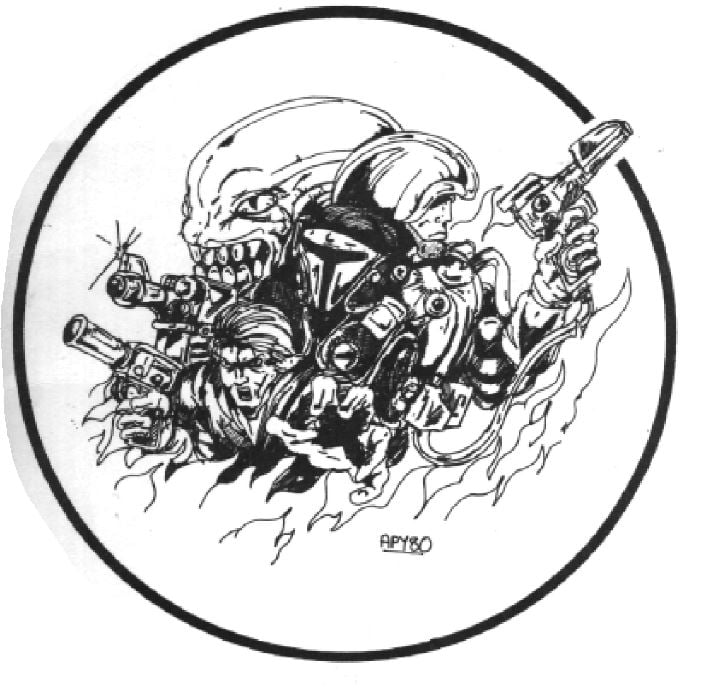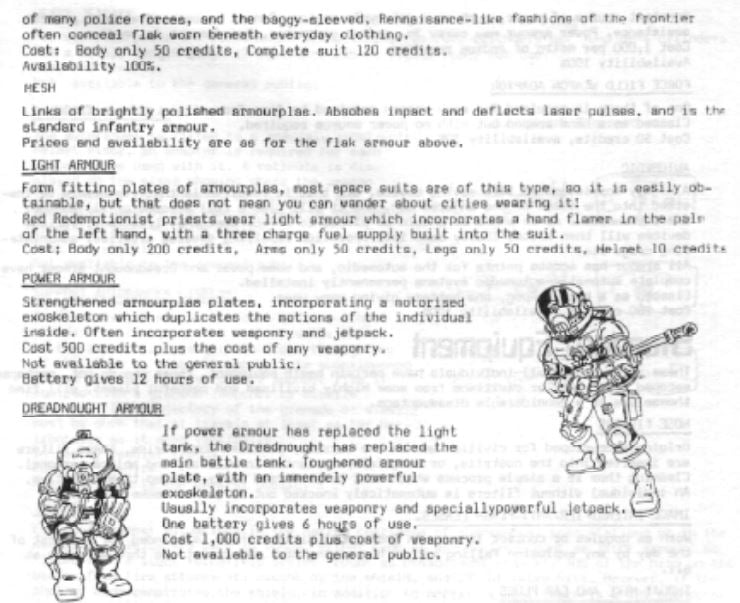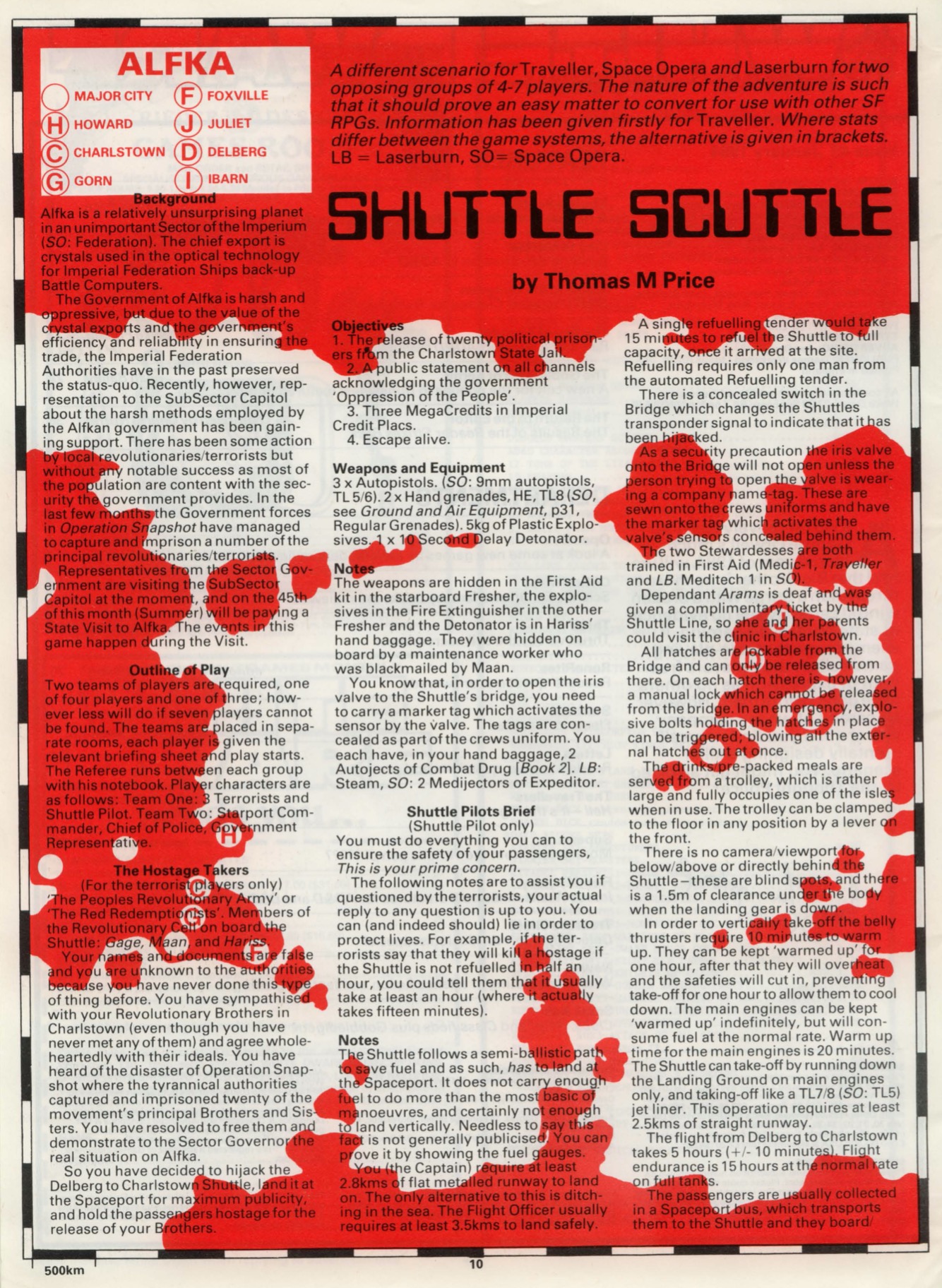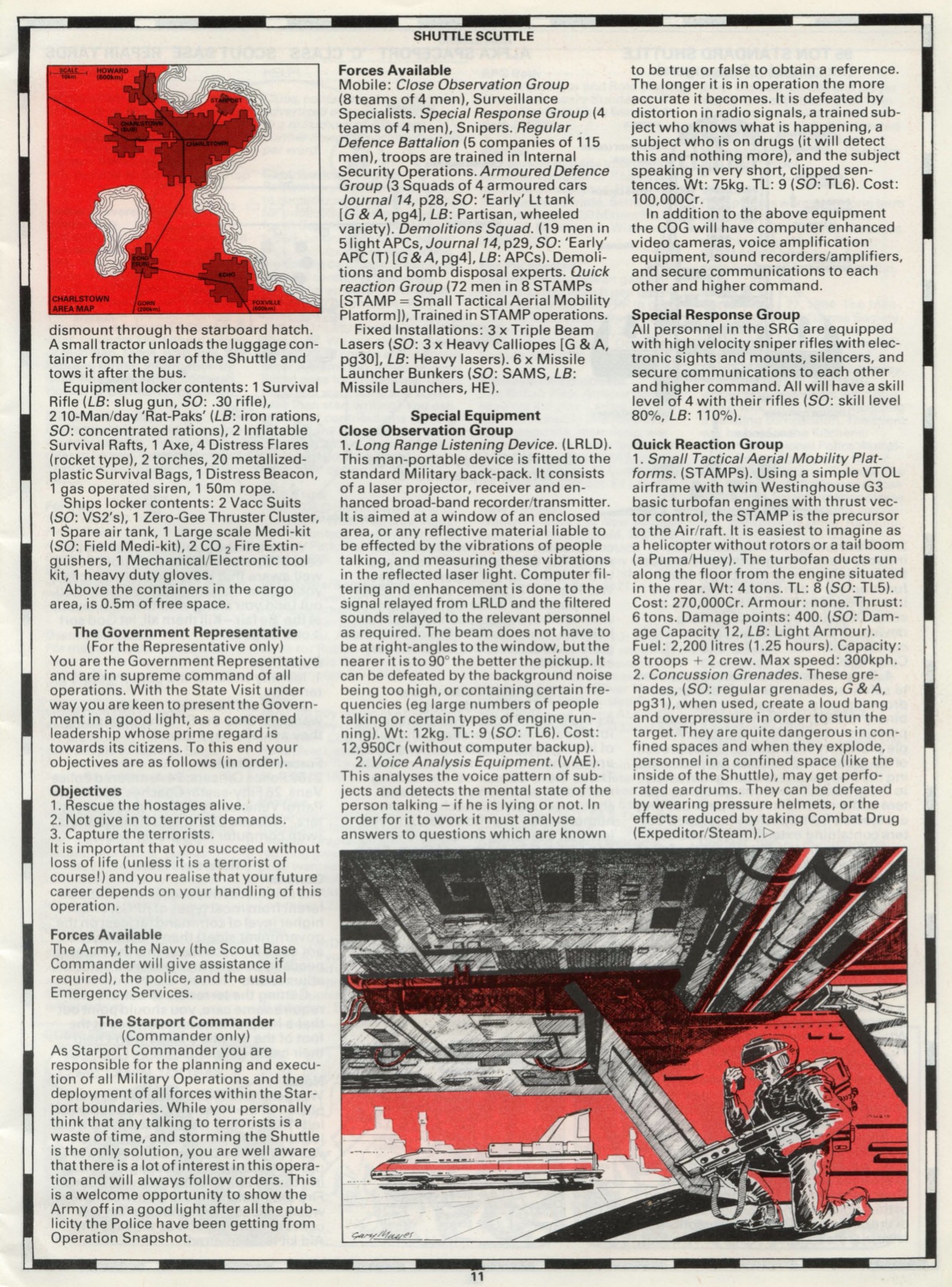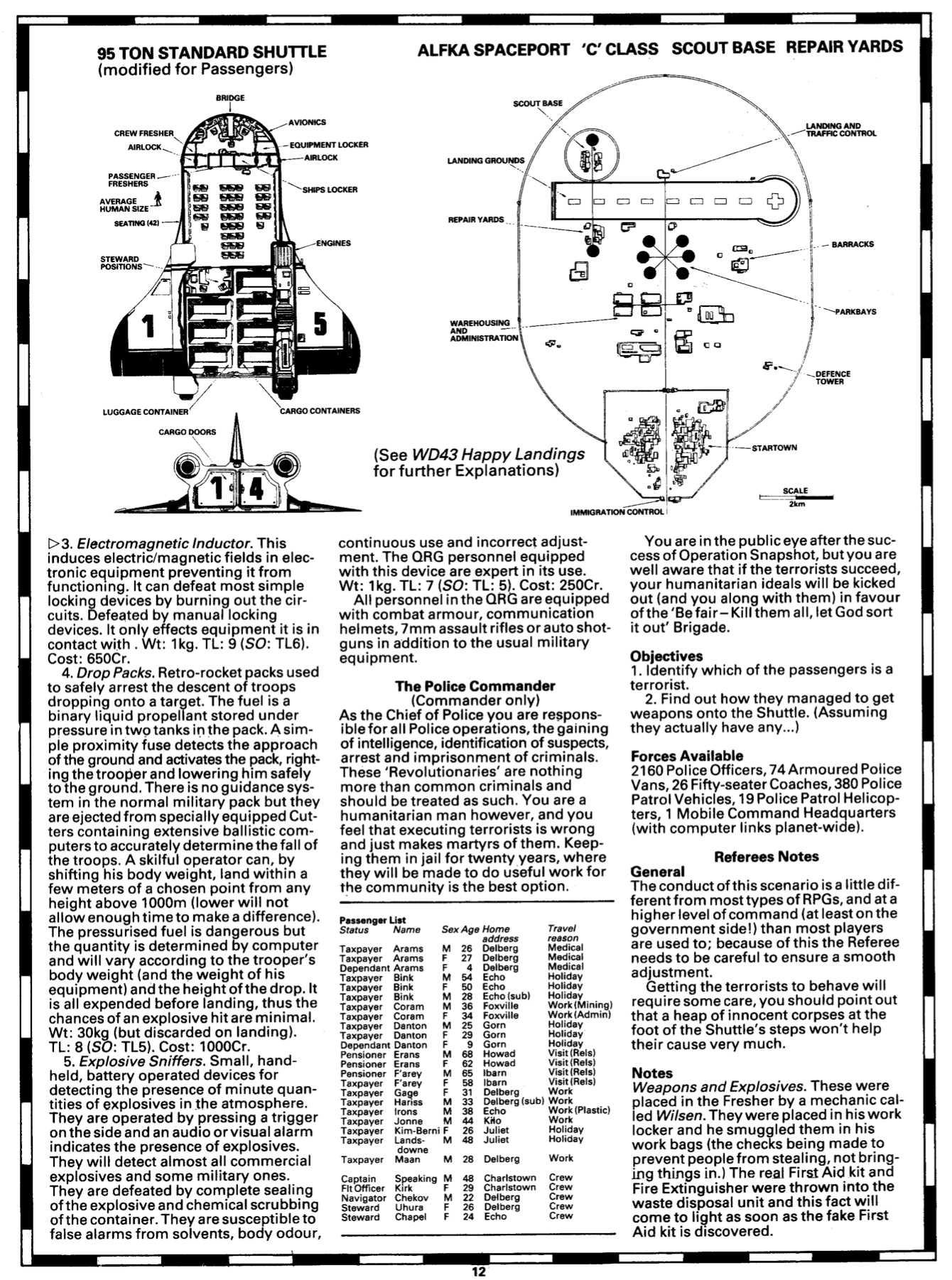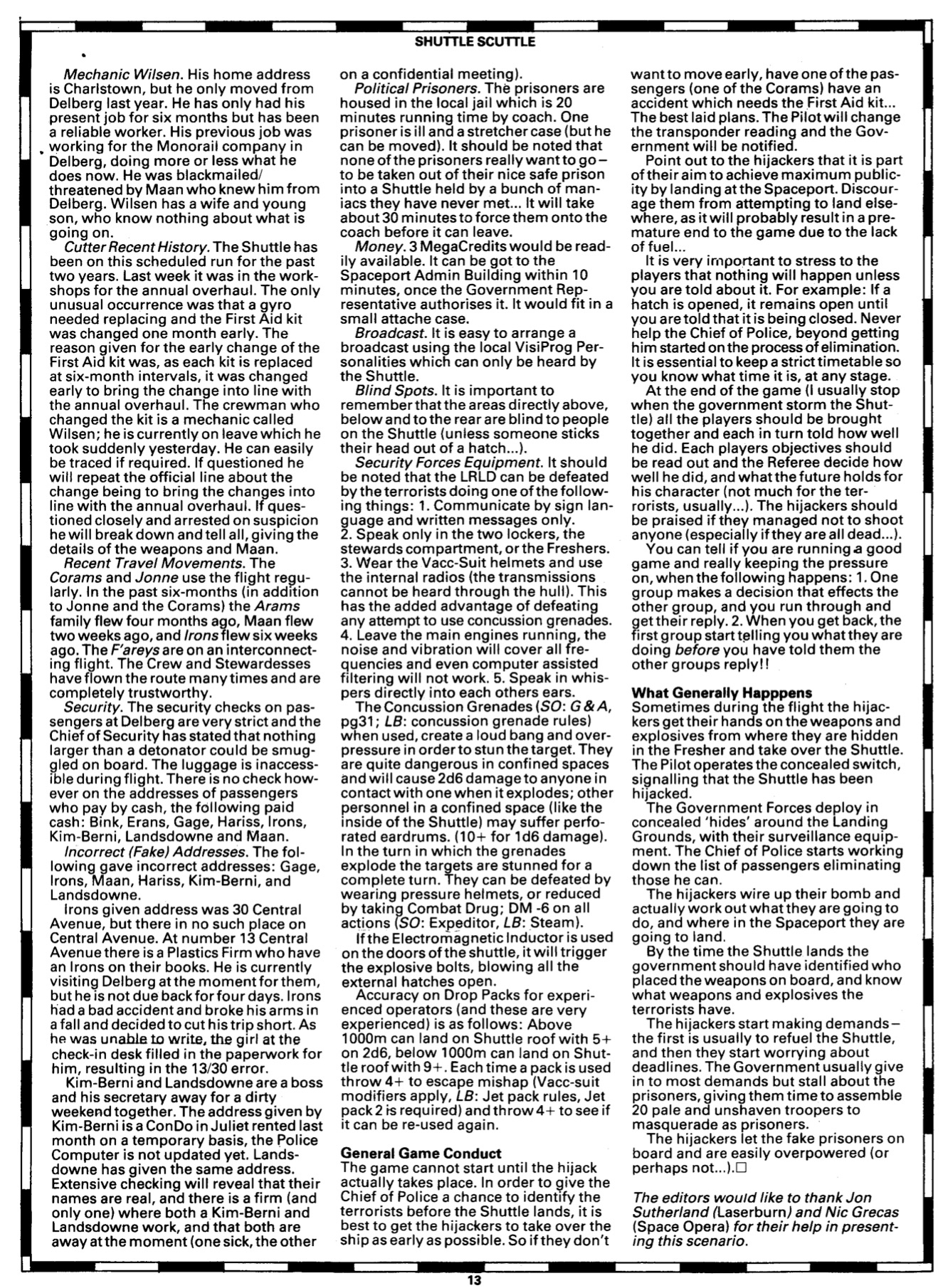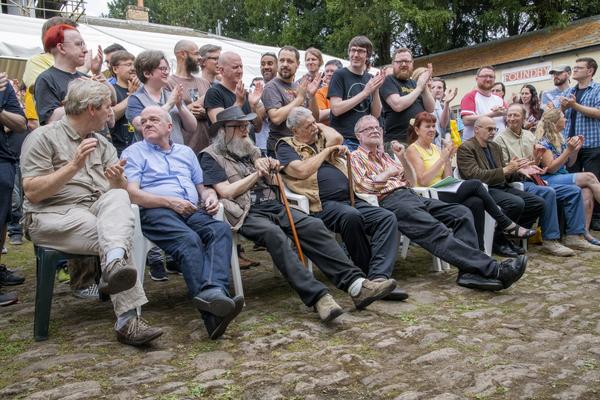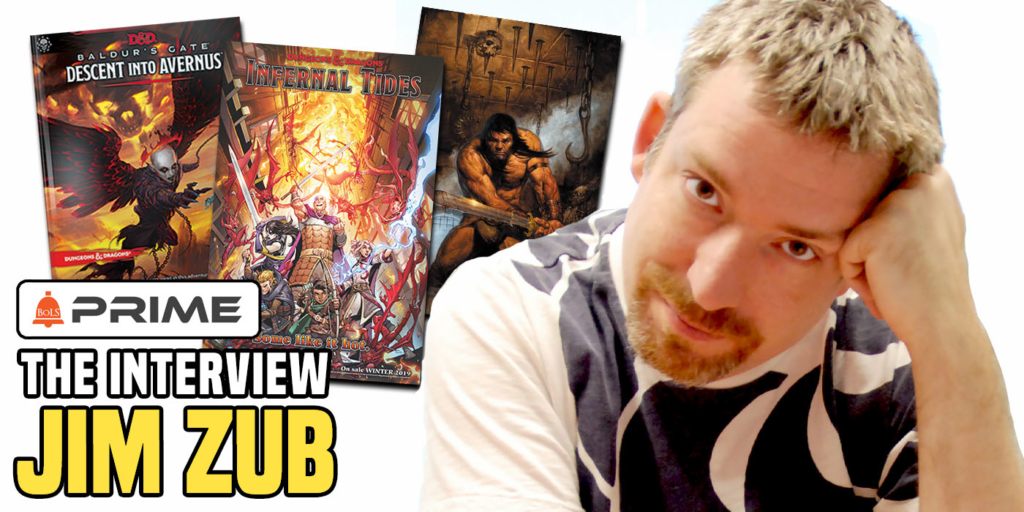Laserburn: Warhammer 40,000’s Secret Edition Zero – PRIME
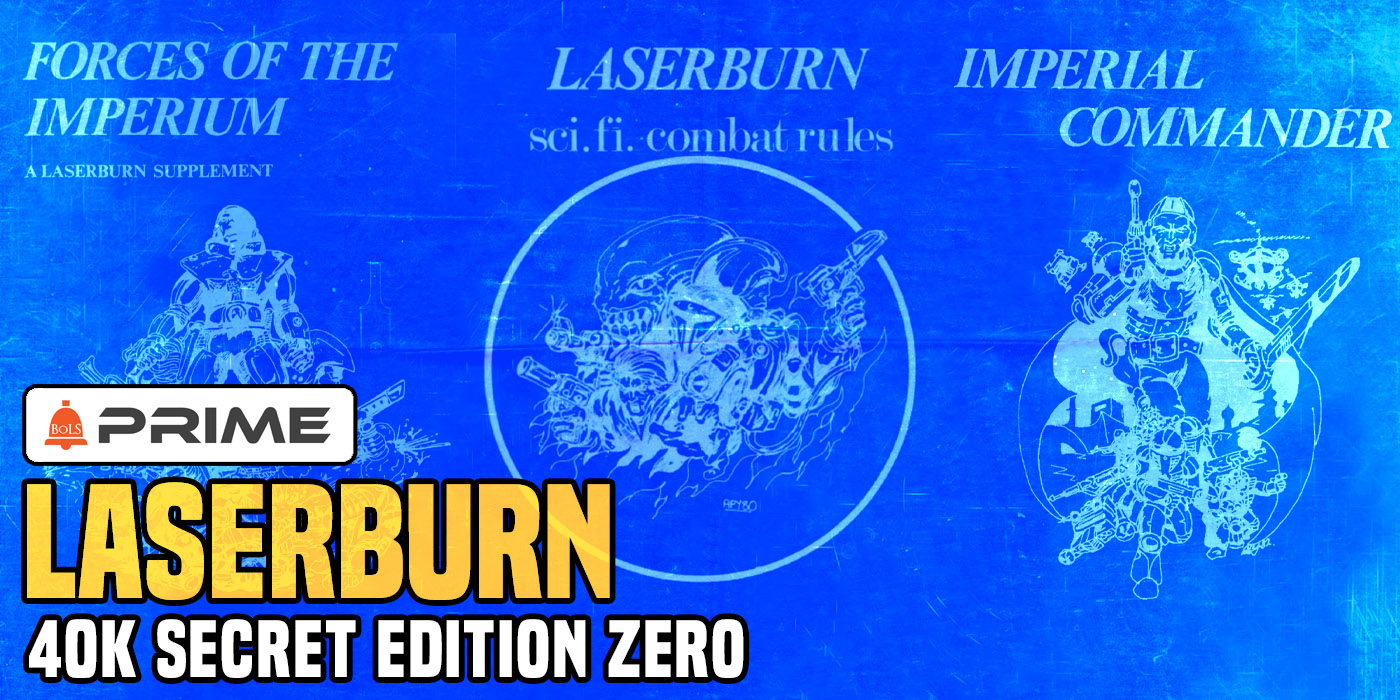
Before there was Warhammer 40K, there was LASERBURN!
Warhammer 40,000 has a long, storied history. First released by Games Workshop in 1987 as Warhammer 40,000: Rogue Trader, that has now gone through a total of nine editions over the last thirty-three years. It has grown from a small sci-fi skirmish game, put out by an unknown British company to a worldwide phenomenon. It has become the major leader in the tabletop gaming community and has spawned countless books and video games. Its lore and setting have had a significant impact on pop, and geek, culture world-wide, and as I write this, it is poised to jump to the world of TV entertainment.
Warhammer 40K did not appear out of thin air. Its creators drew on a vast number of sources, both from other works of pop culture and from real historical events. The early designers also drew on other games, as one should expect. Most obviously, they drew on the other major GW invention of the time, Warhammer Fantasy Battles. The two games share not just name elements but a lot of the same rules DNA and even setting elements. While Warhammer Fantasy remains well known, 40K also drew very heavily on another, mostly forgotten game of the period. The games share enough similarities in some areas that its fair to call this game a proto-40K or almost a rough alpha run of the final product. That game was Laserburn.
What Is Laserburn?
Laserburn, sometimes written as LaserBurn or Laser Burn, is a 1980 sci-fi skirmish wargame written by Bryan Ansell and published by Tabletop Games in Nottingham. It was made to be a relatively quick game, with about 12-20 models per-side. The game is primarily aimed at using 15 mm models, which the company sold as well, but could be played with 25 mm models as well. Here is how Ansell describes the purpose of the game in his forward to the core book:
“These rules were written originally as an adjunct to the various Sci-Fi role-playing rules available, to give a detailed and satisfactory method for simulating the heroic deeds of our characters in the assorted robberies, skirmishes and boarding actions they were involved in. But they soon grew to be a set of self-fulfilling Sci-Fi rules that can be used as a role-playing system in their own right.
LASER BURN rules are designed around a game involving about 12-20 figures a side but can be used successfully with far fewer or many more. You can use Laser Burn as a method of resolving combat situations in your role-playing Sci-Fi campaign, or you can use them as we do, to play a connected series of games which will form a kind of saga involving your own characters.
We use them mainly to simulate battles involving roving bands of space pirates, outlaws and revolutionaries, intent on committing sundry felonies, versus the forces of Law and Order, or rival groups.”1
Who is Bryan Ansell? 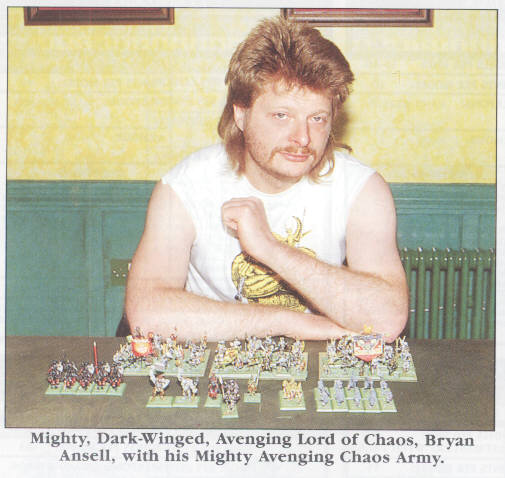
Ansell was part of the corp of aspiring miniature game designers and model makers in Nottingham, UK, in the late 70s and early 80s that would soon put the town on the map as the center of tabletop wargaming. As a local, he seems to have been tied into the miniatures industry early on. In 1976 he founded Asgard Miniatures and ran that company for some years. By 1980 he was working with other companies, including Tabletop Games, which published Laserburn.
At the same time, he was writing Laserburn. He was also working with another fledgling Nottingham company: Games Workshop. He not only worked with them but helped get Citadel Miniatures off the ground and by extension got GW into the miniatures making business. By 1983 he seems to have been working mostly with GW, and he, along with Rick Priestley and Richard Halliwell, wrote and designed Warhammer Fantasy Battles. Halliwell, it should also be noted worked on Laserburn with Ansell.
By 1985, two years before the release of Rogue Trader, Ansell had taken over as Managing Director of Games Workshop. It was Ansell, ultimately who was running the show when 40K was conceived and written. Ansell, along with Tom Kirby, bought the company from co-founders Steve Jackson and Ian Livingstone. After running GW for some time, Ansell stepped down in favor of Kirby and put his energies into running his historical focused game company Wargames Foundry.
So here we have a direct connection with the creators. Ansell designed and wrote Laserburn, and then went on to work at and run Games Workshop at the very time 40K was being developed. Also, Richard Halliwell, who also worked on Laserburn, made the jump over to the design group at GW during the same period. Tony Ackland, who did the art for Laserburn, also moved over to GW and was an influential artist there. Ansell thus was hugely influential in the start of 40K. If he and Halliwell had wanted to reuse elements of Laserburn in 40K, they were well placed to do so. But did they?
Two Games, Both Alike In Dignity
Conceptually Laserburn and 40K are pretty similar games. At least where Rogue Trader is concerned, both are designed as small scale sci-fi skirmish games and use a similar scale, 25 vs. 28 mm. Unlike many of the historical games of the period they were not meant to cover massive sweeping battles, the games of current 40K featuring hundreds of models per side would seem unimaginably large back then. Past this, a quick glance at the rules of Laserbrun would not reveal many similarities.
Laserburn uses three stats, Weapon Skill, Initiative Level, and Combat Skill. Also, models can have various skills, some set, some randomly rolled. Actions are resolved using both D6s and D100s. In the base game, almost all the skills are directly combat focused. Players each field small armies of troops, one of which represents the player. They take turns moving about and fighting—your basic tabletop game. For a more in-depth look at the rules and play, check out this helpful article.
Looking a bit deeper, you can find some similarities in rules, though they were maybe a bit superficial. Both games, for instance, have a weapon skill stat. Both Laserburn and Rogue Trader are supposed to be played with a GM running the event. Laserburn uses tapered templates for flamethrower-like weapons and circular ones for explosions.
These are obviously reminiscent of the old 40K flamer and blast templates:
Still, these similarities could be a coincidence, and it is evident that Rogue Trader owed far more to Warhammer Fantasy then it did Laserburn for its rules. However, when we turn to the setting, we get a different story.
Where We Lay Out the Scene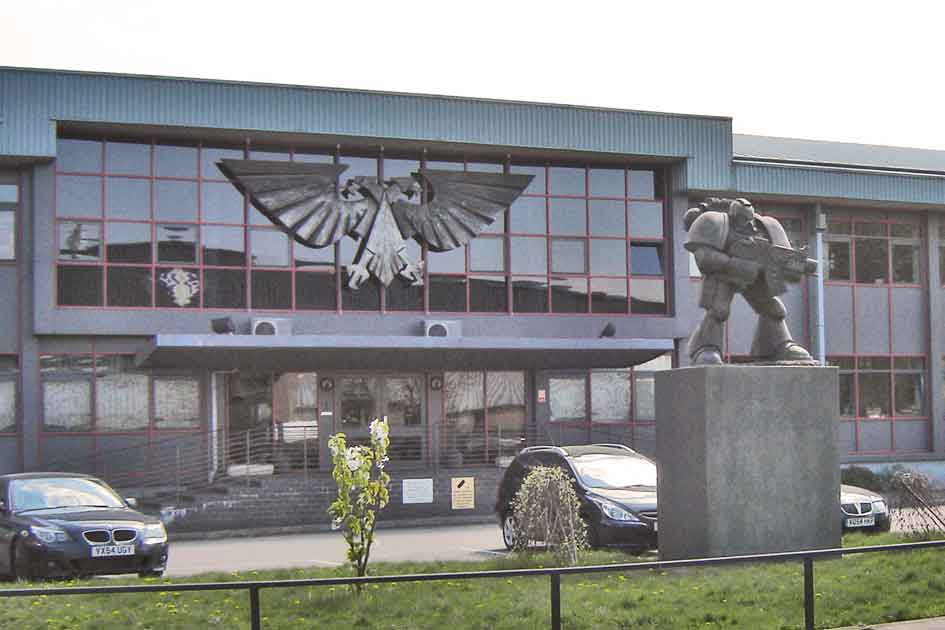
Laserburn does not have a ton of published background. The core rules have a couple of pages, and they’re a bit scattered around elsewhere. What does exist may seem awfully similar to 40K fans. The setting for Laserburn is described as:
“Our adventures and battles take place in the flung future. Man has reached the stars and the highest pinnacles of science and civilization, and is now well on his way down the long bloody slid back to barbarism.”2
OK, so its the future, and we had a golden age but are now in a period of war and decline. Sure, that could describe 40K, but it is pretty generic as well. Reading on a bit, we find out that most of humanity is ruled from Earth, as part of an Imperium and said Imperium is lead by an Emperor. It goes on to say:
“Earth houses the nerve center of Humanity’s lords and masters, the High Lords of the Imperium. The Imperium must use all of its power to ensure that the frontier continues to be sucked dry, feeding and clothing the teeming, drone-like megacity populations. The most feared instrument of Imperial power is the Inquisition.”3
Huh. OK, now we’ve got something here. An Imperium ruled from Earth by an Emperor and his “High Lords”? mega (hive) cities? An all-powerful Inquisition that supports and upholds the Imperium and is feared by all? An Inquisition we are later told often wipes out whole planets in order to further it’s goals, that it indeed makes liberal use of this power. Well, these are all things that should be highly familiar to any 40K. This is pretty clearly describing a proto- Imperium of Man, one that is indeed pretty close to the version we get in Rogue Trader.
The Imperium is future described in the background as being large and sprawling, with the inner portion run by the High Lords and the outer regions run by The Lord Knights, a group that often feuds among themselves. The Inquisition, of course, watches over all.
While the game does feature aliens, they aren’t mentioned in the background. The main antagonist of the Imperium is the Red Redemption. They hold a loose group of planets mainly settled by “African and near-Eastern groups.” These “Afro Asian revolutionaries” built the Red Redemption to fight the Imperium. The description states:
“It parallels Imperialism exactly, merely substituting the interests of Allah, as embodied in his chosen people, the Red Redemptionists, for those of the Imperial High Lords.”4
The leaders are additionally described as:
“Led, both militarily and spiritually, but the Brothers and Masters of the inner circle. These rabid fanatics have their flesh flayed from them and replaced with a metal carapace. They’re pretty tough hombres, but their unique condition tends to warp their view of life, morality, and the universe in general, considerably.” 5
Now, this description of the Red Redemption is problematic, to say the least. Racism aside, we can see the early elements of the mortal followers of Chaos here. A “dark” mirror to the Imperium, led by people who rebelled against the Emperor. You also have elements of religious fanaticism, and the crazy flying/metal augments and all that. It’s got a pretty similar vibe. In addition, Redemptionists would show up in Necromunda, while the Cult of the Emperor’s Red Redemption was featured in the Rogue Trader RPG. Digging through the rest of the lore and the rules, you can find more familiar connections.
Take a look at these weapons options: 
Right there we’ve got:
- Hand Flamer
- Bolt pistol
- Bolt Rifle
- Heavy Bolter
- Plasma gun
- Grenade launcher
- Missile launcher
- Conversion beamer
Not listed here, but included in the game are needle rifles and pistols. All of these weapons feature in 40K, and while some are pretty generic, others such as the bolt weapons are too specific to be a coincidence. You’ve also got Laser Pistol, Laser Rifle, and Laser Cannon, which would eventually be shortened to Las-weapons of various types. We can also look at armor types:
Flack, Power, and Dreadnought (i.e., Terminator) Armour are the classic types of armor used by the Imperium in 40K. Reading through the books, in particular the Force of the Imperium book, you can find plenty of other connections and allusions to 40K. Even some of the art, such as this bit for the Forces of the Imperium book: 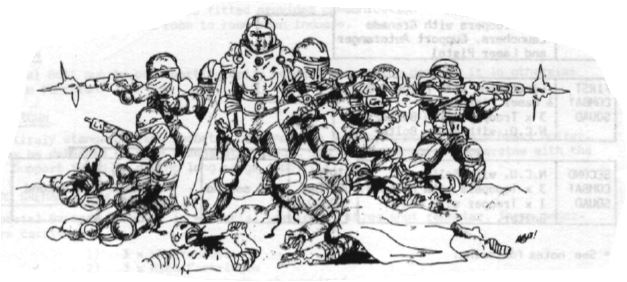
Would not be out of place in early 40K novels.
A Strong Connection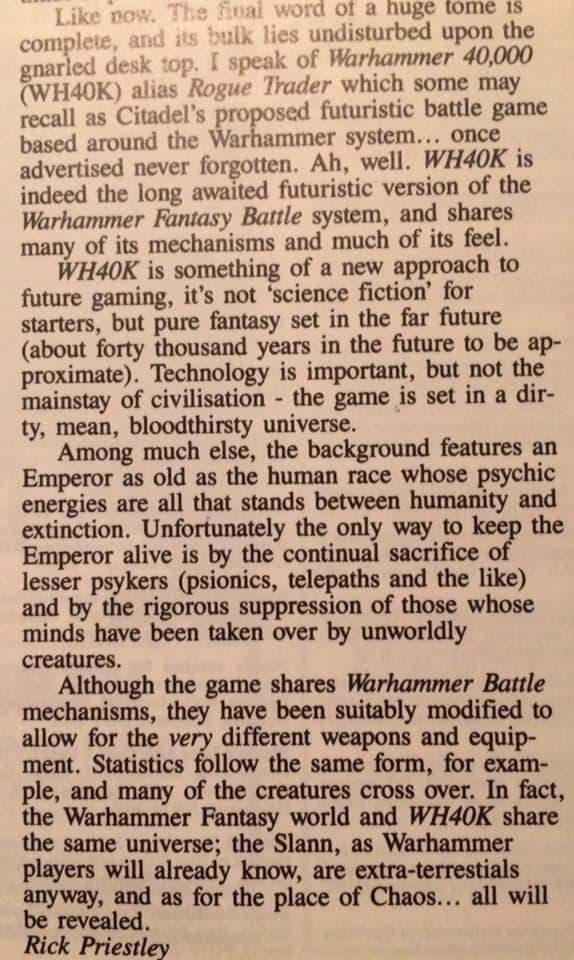
So here we have a solid connection between the two games. While the rules for 40K aren’t greatly influenced by Laserburn, it’s clear that the setting was. While the Laserburn setting is far from the current 40K setting, it bears a much stronger resemblance to the setting of the Rogue Trader Era. Indeed it seems as if the setting for 40K started as a mashup of Laserburn and Warhammer Fantasy and then grafted on a bunch of other pop-culture ideas. It seems pretty clear what happened here. GW was making a brand new sci-fi game, and Ansell and some of the other designers had just created one a few years back. They liked the setting, and it would have been easy to reuse and adapt elements of it for their new game. In essence, they plagiarized themselves. Ansell himself pretty much admitted as much in this 2018 comment on another article about the two games: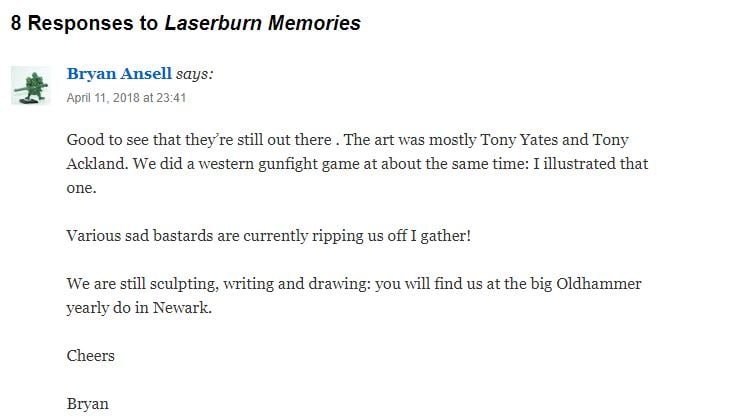
Most creators end up building a larger backstory to their games then ever makes it into print. Laserburn has only a short printed background, but I would bet good money that Ansell and his co-designers had a much more fleshed out background in their heads or notes. We’ll likely never know how much of that made up what becomes 40K. It’s clear that Laserburn, a mostly forgotten game, had a considerable influence on 40K. Setting wise, it functions as a sort of Edition Zero for the later game, and it also helped further the careers of many people who made 40K and GW what it is today. Without Laserburn, there might well be no Warhammer.
Epilogue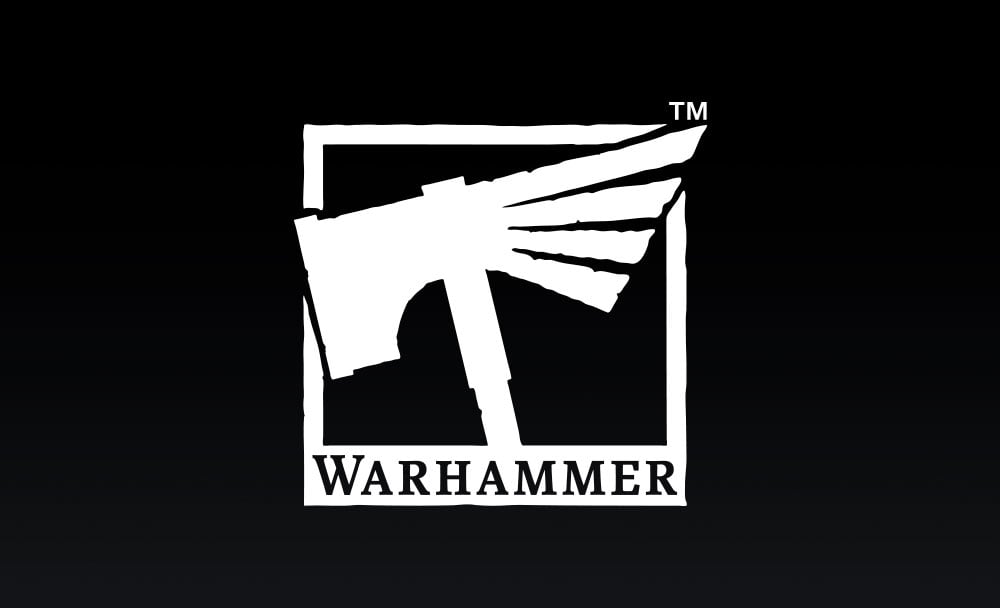
GW knew about Laserburn, they even published a whole adventure for it in White Dwarf 49, check it out to get an idea for some of the flavor of the game:
Bryan Ansell is alive and well. Some reports say he retired in 2005, but he appears to still be active in the gaming community, both as a player and creator.
The Legends in 2019, from left to right: Alan Merrett, Tony Yates, Tony Ackland, John Blanche, Bryan Ansell, Diane Ansell, Rick Priestley, Nigel Stillman, Chrissy Hudson. (source)
Laserburn is still available for purchase, along with miniatures lines that can be found here. The E-books are cheap, and it’s a classic game. It’s still got an active, if small, following and all reports are that its a pretty quick and fun game to play.
For those interested in the early days of Games Workshop, consider checking out and supporting the upcoming book by GW founders Livingstone and Steve Jackson.
Warhammer 40,000 is entering its 9th (or should that be 10th?) Edition as the largest tabletop war game in the world, and Games Workshop continues to have record profits.
From humble beginnings, rise great things.
- Bryan Ansell. Laserburn. (Nottingham: Tabletop Games, 1980), pg. 1
- ibid, pg. 36
- ibid, pg. 36
- ibid, pg. 37
- ibid, pg. 37



